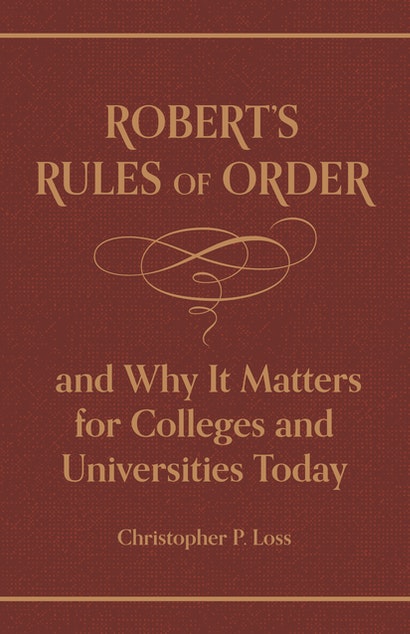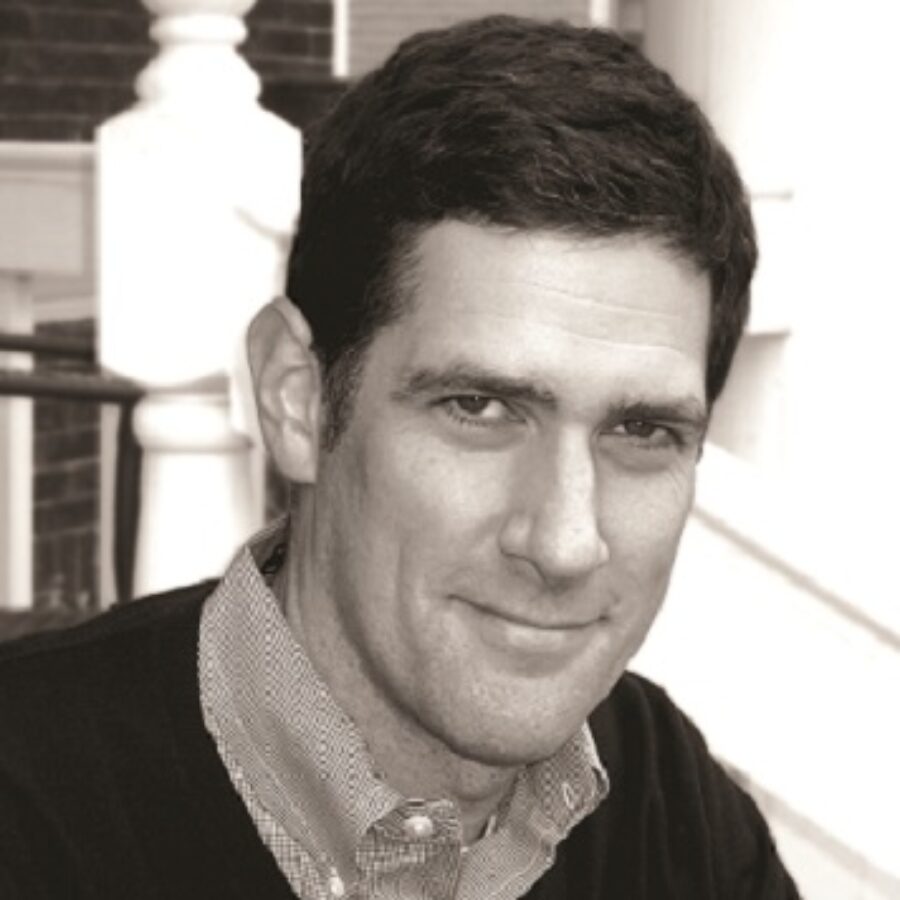
SUMMARY
- Inside Higher Ed Q&A with Christopher Loss, Sept. 23, 2021
The year 1876 was an epochal one in American politics and letters. Enterprising Philadelphians pulled off the Centennial International Exposition to widespread acclaim. Despite continued economic aftershocks from the Panic of 1873, triggered when 25 railroads defaulted on their debts, nearly 10 million visitors poured into the city that summer to celebrate the signing of the Declaration of Independence and the experiment in democratic governance it unleashed.
That 1876 was also an election year added excitement to the exposition and to the hope that the next president of the United States might lift the nation’s politics out of the doldrums after a decade of scandal and corruption. The good feelings didn’t last, however, when contested party conventions led to compromise candidates and another electoral crisis in November. Even though Democratic Rep. Samuel J. Tilden of New York had won the popular vote over Republican Gov. Rutherford B. Hayes of Ohio, Tilden lost the presidency after Congressional Democrats ceded 20 disputed electoral college votes and a Tilden victory in exchange for the withdrawal of federal troops from the South, effectively ending Reconstruction and, with it, the possibility of full African American citizenship. The irony was thick. More ballots had been cast than in any previous election, yet the outcome-a discredited, many believed illegitimate chief executive in Hayes, intensified sectionalism, segregation, and racial violence-could not have been less democratic.
The realization that democracy might not be attainable by relying on traditional political institutions marked the first of many challenges to confront the American people and their government during the Gilded Age, when a minimal state of “courts and parties” grew into a bureaucratic state of public, private and voluntary associations. The heyday of laissez-faire individualism, the late 19th century was also a time of economic booms and busts, class strife and stratification, demographic change and xenophobia, and of fierce struggles for women’s and African Americans’ rights. It was, in other words, a tumultuous time much like our own, when many Americans doubted whether social, political and economic justice were even possible under free-market capitalism. Having grown tired of “politics as usual” and the vagaries of the so-called natural market, many Americans, then, as now, were searching for new ways to engage civil society and mobilize voluntary action in order to revive the nation’s waning democratic creed.
Then, as now, many wondered if the nation’s colleges and universities could arouse the feelings of national belonging that so many Americans craved. In a polity ambivalent about big government interventions, and with anti-government sentiment on the rise, the country’s decentralized higher education network surfaced as one possible way to bridge the gap “between citizens and the state” and restore equanimity and dignity to America’s enfeebled civic culture.One major question remained: Was the educational system up to the task?Then, as now, the answer was, at best, a shaky “maybe.”
Back then, the country’s higher education system, in flux since before the Civil War, remained dominated by the old-time denominational college. But the college’s blend of hoary religious proselytizing and rote classical training seemed out of step in a fast-changing society buffeted from every direction by the forces of modernity. In the opinion of a small group of self-anointed academic reformers-led by Andrew Dickson White of Cornell, Charles W. Eliot of Harvard and Daniel Coit Gilman of Johns Hopkins-the old-time college was no better prepared to deal with the social and political crises of modern life than it had been to deal with the crisis of disunion and war. What the country needed was a “real university,” implored Eliot in The Atlantic Monthly in 1869, where “every subject should be taught … on a higher plane than elsewhere.” The German university and its commitment to pure research was the aspiration, but not one achieved in America, where university-building, like state-building, was a patchwork affair. Using homegrown and imported material, and funding from government land grants and Gilded Age tycoons, academic reformers’ plan for the American university gradually took shape. It would be a college but on a grander scale, with a diverse mission that united undergraduate, professional and doctoral training; nurtured disciplined inquiry; and generated expert knowledge to construct the nation anew.
Easily the most revolutionary new university, and the one that, for a time, came closest to the German model, was Johns Hopkins University, opened in Baltimore, Maryland, in 1876, the same year that American democracy began to sputter and fume. The date was a happy coincidence-local financier Johns Hopkins had died three years earlier, leaving half his $7 million estate for the creation of a namesake institution-subsequently seized upon by the school’s president-in-waiting, Daniel Coit Gilman. Gilman, aged 44, had been in search of a real university for most of his adult life. After not finding what he was looking for at Yale (too hidebound) or the University of California (too political), Gilman landed in Baltimore. He was the world’s leading expert on higher education before such a thing even existed. He had studied and traveled in Europe and spent time conducting research on research universities in the hope that he would someday get a chance to build one of his own. In careful and occasionally bold flourishes, his inaugural address laid out the university’s research, teaching and service missions before ending with an evocation of a possible expert-driven democratic renaissance: “This year is auspicious, inviting us to sink political animosities in sentiments of fraternal good will, and of patriotic regard for a re-united republic.”
A thousand miles away, in Milwaukee, Wisconsin, on the shores of Lake Michigan, Maj. Henry Martyn Robert of the U.S. Army Corps of Engineers, aged 38, was also pondering the dilemma of democratic nation-making and what he could do to fix it. Although he had a day job that kept him busy, he had just finished a small book on the side that he thought might help-not that anyone was holding their breath waiting to receive a free copy of Robert’s Rules of Order: Pocket Manual of Rules of Order for Deliberative Assemblies. He had never written a book before. He had no real audience of which to speak. And while he had an audience in mind, it wasn’t clear that they’d be interested in what he had to say. All he knew was that democracy was in trouble, and he felt duty-bound to try and save it. Remarkably, his rescue plan, if you could call it that, though far less grandiose than Gilman’s, affected democratic norms on a day-to-day basis far more and, without setting out to do so, ultimately helped turn the American research university into a powerful engine of democracy for the nation and world.Introduction from Robert’s Rules of Order and Why It Matters for Colleges and Universities Today by Christopher Loss. Editorial apparatus copyright © 2021 by Princeton University Press. Reprinted by permission.
Further Reading:
- Robert’s Rules of Order and Why It Matters for Colleges and Universities Today, by Christopher P. Loss, Princeton, NJ: Princeton University Press, Sept. 21, 2021.
- Between Citizens and State: The Politics of American Higher Education in the 20th Century, by Christopher P. Loss, Princeton, NJ: Princeton University Press, 2012.
- The Great Peacemaker, by Ralph P. Smedley, a biography of General Henry Martyn Robert, originator of Robert’s Rules of Order
- Robert’s Rules of Order

Christopher P. Loss
Christopher P. Loss is a historian of the 20th-century United States who specializes in the social, political and policy history of higher education. His interests range from the study of democratic citizenship and interdisciplinary expertise to the research economy and the linkages between the K-12 and higher education systems, focusing in each of these areas on the ways in which the organization of knowledge shapes-and is shaped by-political and social institutions in modern America.Before arriving at Vanderbilt University, Loss was a research fellow in the Governance Studies Program at the Brookings Institution in Washington, D.C. He also worked in academic administration for four years in the Office of the Vice President and Provost at the University of Virginia.
[10] For Robert’s biography I have relied on Ralph C. Smedley, The Great Peacemaker (Los Angeles: Borden Publishing Company, 1955); Ralph C. Smedley, The Man Behind the Rules: An Account of the Life and Work of Henry Martyn Robert, author of Robert’s Rules of Order (Santa Ana, CA: Toastmasters International, 1937); Thais M. Plaisted, “General Henry M. Robert: Parliamentarian,” Social Studies 48, No. 5 (May 1957): 158-62; E.J. Mehren, “Henry Martyn Robert: Soldier, Parliamentarian, Author and Engineer,” Engineering News-Record 84, No. 17 (April 22, 1920): 798-802; the preface and introduction to Henry M. Robert, Robert’s Rules of Order, Newly Revised; a New and Enl. Ed. by Sarah Corbin Robert et al., (hereafter RRONR) (New York: Scott, Foresman and Co., 1970), xxi-xlii; and Don H. Doyle, “Rules of Order: Henry Martyn Robert and the Popularization of American Parliamentary Law,” American Quarterly 32, No. 1 (Spring 1980): 3-18. On the connection between the university and democracy, see Loss, Between Citizens and the State; and Andrew Jewett, Science, Democracy, and the American University: From the Civil War to the Cold War (New York: Cambridge University Press, 2012)